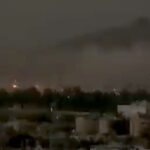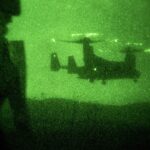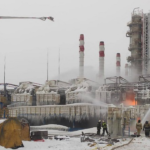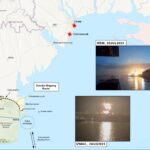The United States Air Force (USAF) will deploy MQ-9 Reaper drones to the 71st Air Base in Campia Turzii (Cluj county), Romania. The mission, starting in January 2020, has been fully coordinated with the Romanian government. Directed by the U.S. European Command’s air component, the deployment serves to promote stability and security within the region, and to strengthen relationships with NATO allies and other European partners. The MQ-9 Reapers have been previously deployed to the 71st AB in July 2019, when they were temporarily re-positioned from their traditional staging area in Poland.
/arc-anglerfish-arc2-prod-mco.s3.amazonaws.com/public/CY3PVKWS4NEENDWIJXBBHNUESI.jpg)
The U.S. Air Force built this hangar, which could house manned or unmanned aircraft, at Campia Turzii from October 2017 to May 2018. Documents obtained by Defense News show plans to build a hangar to accommodate medium-altitude, long-endurance drones like the MQ-9. (Valerie Insinna/ Defense News)
The U.S. Department of Defense has invested over $3 million in the modernisation of Romania’s 71st AB in the past two years. Part of the infrastructure upgrade package was the construction of a $950,000 hangar that is able to house medium-altitude, long-endurance (MALE) drones such as the MQ-9 and support drone operations.
The MQ-9 Reaper is one of the most advanced unmanned aerial vehicles (UAVs) ever built. As a multi-role platform, the MQ-9 can perform a variety of missions, including intelligence, reconnaissance, target-aquisition and surveillance (ISTAR), ground attack, close air support (CAS), and combat search and rescue.
While the Reaper is most known for its kinetic strikes against terrorist leaders (including IRGC-QF Gen. Soleimani on January 3) and other high-value targets, the drone is a very effective ISR/ ISTAR asset. The MQ-9’s endurance is 30 hours when conducting ISR sorties, with decreases to 14 to 23 hours (depending on the loadout) when carrying weapons. The Reaper has a 1,850 km range (1,000 nmi; 1,150 mi) and an operational ceiling of 15,000 meters (50,000 ft). It’s sensor suite includes a syntethic aperture radar and infrared forward-looking infrared, which can stream live footage at views ranging from 19mm to 560mm.
During its stay in Romania, the MQ-9 will likely be tasked with gathering intelligence on enemy intentions and capabilities in the region. The Black Sea will be a main focus of its ISR mission, where the UAV will monitor the Russian Navy’s Black Sea Fleet (BSF) for nefarious activity, force buildup and forward deployments. The collection of Imagery Intelligence (IMINT) on Russia’s BSF activities is not only important for NATO’s Eastern flank, but also for monitoring Moscow’s force deployment to Syria. The ports of Sevastopol and Novorossysk are Russia’s main logistics bases supporting expeditionary operations in Syria, and are periodically sealifting capabilities to Tartus (Syria).
In addition to the Black Sea, the MQ-9 will likely also fly over Eastern Ukraine. American UAVs were frequently spotted on ADS-B receivers loitering over the frontline in Donbas and Luhansk, monitoring for enemy activity (e.g. ceasefire violations, Russian supplies, tactical movements).
When used as a striking platform, the Reaper can field a “cocktail” of weapons systems such as the GBU-12 Paveway II laser-guided bomb, AIM-9 “Sidewinder” air-to-air missile, GBU-38 with JDAM, and the more famous AGM-114 “Hellfire” air-to-surface missile. Due to its armament, the UAV can target and destroy light infantry, surface vessels and armored tanks.
- Russia Bombs Maternity Ward & Children’s Hospital in Mariupol As Part of Siege - 10 March 2022
- T-Intell’s OSINT Training Marks One Year Anniversary - 18 November 2021
- IS-K Never Left the Battlefield - 27 August 2021









